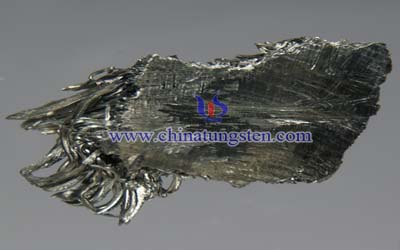Optimism About HREE Market
- Details
- Category: Rare Earth News
- Published on Monday, 11 March 2013 10:46
Rijkers has updated his report on Northern Minerals (ASX:NTU) following the recent financing package totalling A$58 million coming from Chinese interests. Rijkers’ view is that Northern Minerals has differentiated itself from other REE explorers by focusing on metallurgical studies in conjunction with exploration programs. The company is expecting first production of mixed rare earths oxides in 2016, dominated by the heavies (yttrium 61.6% and dysprosium 11.6%).
Rijkers is more optimistic than most about the sector – well, at least the HREE end of it. He believes the heavy rare earths will come back into focus in 2013 as global equity markets rally to near all-time highs due to a marked up-tick in economic growth expectations and improved political clarity.
“The REE market is itself very small but enormous downstream markets rely on their input at differing stages of the supply chain. REE demand is driven predominantly by two of the fastest-growing economically sensitive areas: renewable energy and high technology,” he writes.
And, despite the low level of investor interest in the HREE equity sector, the past two years have seen industry participants bolster their efforts to secure supply. These efforts have included:
The U.S. establishing a $120 million REE research institute to development new methods of REE production;
The U.S. passing legislation to boost domestic REE production (especially NdFeB magnets critical to defence applications);
Strategic alliance formed between the U.S. Department of Defence and Ucore Rare Metals for dysprosium;
Japan has invested $1.3 billion in REE recycling programs;
Japan has offered $110 million in subsidies for REE projects that reduce its dependency on China;
The E.U. and U.S. have taken legal action through the W.T.O against alleged protectionist Chinese policy;
South Korea and Japan have invested in REE projects through their respective state-owned investment vehicles; and China has tightened environmental controls, implemented policies to create HREE stockpiles and sanctioned investments internationally in HREE projects.
Yet, as he says, the results so far have been muted.

Rijkers continues: “Despite the volatility experienced in the REE sector, taking prices from historically low levels to astronomic heights and subsequently back to the levels of 2010, there are two divergent themes emerging. The rise in HREEs initially reflected the tight demand/supply of the market but also soared to unsustainable levels as speculators entered the market when Japanese demand collapsed due to the Fukushima disaster. This resulted in consumers cutting back based on price destruction which was compounded by the economic and political risks that took hold of the global economy in 2012.
“However, underlying demand for HREEs remains firm due to the robust growth of the downstream industries that they service and a lack of new HREE sources outside of China. There are no substitution materials or alternative technologies that can replace HREEs’ critical role in their respective supply chains without a material cost being incurred. There is also a seismic shift occurring within the demand picture of HREEs which is dominated by China and historically domestic production has exceeded domestic demand. China announced in 2011 that their HREE reserves are finite (8-12 years) and as their REE requirements shift away from lower value LREE applications towards higher value HREE applications, it is likely that China will become a net importer of HREEs over time.
Rare Earth Manufacturer & Supplier: Chinatungsten Online - http://www.chinatungsten.com
Tel.: 86 592 5129696; Fax: 86 592 5129797
Email: sales@chinatungsten.com
Tungsten News & Tungsten Prices, 3G Version: http://3g.chinatungsten.com
Tungsten News & Tungsten Prices, WML Version: http://m.chinatungsten.com



 sales@chinatungsten.com
sales@chinatungsten.com